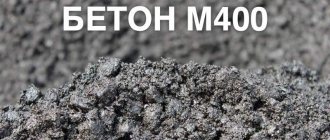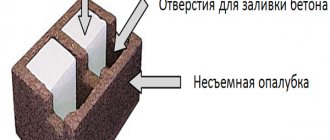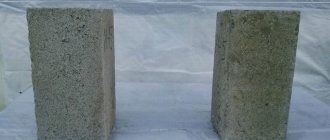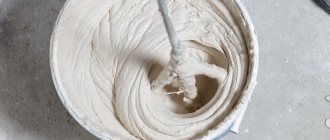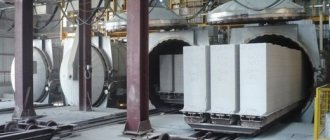Types of lime. Classification:
There are different types of lime.
In accordance with the scope of application, technological and construction types are distinguished.
The composition of lime includes silicates and calcium aluminoferrites, which give it hydraulic properties. Depending on the level of their content, it is divided into air and hydraulic. The first ( air lime ) allows mortars to harden and maintain their strength characteristics at normal humidity levels, and the second ( hydraulic lime ) gives them these qualities even in conditions of high humidity, including in water.
The airy type of lime is divided according to the amount of oxides it contains into calcium, magnesia and dolomite lime . In the first case ( calcium lime ), the proportion of calcium oxide in the product is up to 95%, and the content of magnesium oxide does not exceed 5%. The second subtype ( magnesian lime ) contains from 5 to 20% magnesium oxide, the rest is calcium oxide. The third ( dolomite lime ) - from 20 to 40% magnesium oxide and from 60 to 80% calcium oxide.
In addition, lime is classified according to its slaking speed, which can be slow, medium or fast. At slow speed, the process takes at least 25 minutes, at medium speed – no more than 25 minutes, and at fast speed, the reaction lasts no more than 8 minutes.
Depending on the grain fraction, lime can be divided into lump and powder.
The classification criterion is also the method of processing - the final product can be freshly fired, slaked, or unslaked.
How to slak lime?
Today you can purchase many types of material, including ready-to-use slaked material. However, situations cannot be ruled out that may require you to do this yourself.
In order to obtain puffed slaked lime, you need to add water to it. The liquid reacts with calcium oxide, releasing large amounts of heat and carbon dioxide. This process occurs due to the conversion of water into steam, which loosens lumps of lime to a fine fraction.
To obtain a hydration composition - fluff, it is necessary to add liquid in an amount of 70-100% of the total weight of lime. To obtain building lime paste, you need to add water in a ratio of 3:1, where 3 is the amount of limestone.
Slaked lime:
Slaked lime is also called caustic lime and is calcium hydroxide Ca(OH)2. It has the appearance of a white powder, which is characterized by low solubility. It is formed when calcium oxide is quenched (its reaction with water).
Lime milk is a solution formed by mixing excess slaked lime and water. It looks like milk. When it is filtered, a clear liquid is formed, called lime water.
Slaked lime is produced by reacting calcium oxide with water. With the latter, 16 kilocalories are released per 1 mole.
The substance in question is a strong base. The higher the temperature, the less likely it is to dissolve. Reacts with acids and, as an alkali, participates in a neutralization reaction in which the corresponding calcium salts are formed. Because calcium hydroxide reacts with carbon dioxide in water, its solution becomes cloudy when exposed to air.
Slaked lime is used in repair work as a whitewash; silicate concrete is made from it. It has been used in construction for a long time and in the past was a popular component for the production of mortar, but today it has almost completely been replaced by cement, which is superior in quality. The disadvantage of calcium hydroxide-based mortar is that it helps maintain high humidity in the constructed premises.
Slaked lime is used in the production of fertilizers, and bleach is also made from it. As flour or powder, it serves as a component for asphalt concrete mixtures.
Silicate concrete, made from calcium hydroxide, has a similar composition to lime mortar. However, unlike the latter, it takes much less time to harden, since its manufacturing technology does not involve adding water, but steam treatment (for this procedure an autoclave is used and a pressure of 9 to 15 atmospheres is maintained).
Lime - differences between slaked and quicklime
Summing up the topic, how slaked lime differs from quicklime, we can draw conclusions. First of all, the chemical composition, the first is calcium hydroxide, an aqueous solution of which is characterized by a highly alkaline reaction. The second is the main oxide, which, when interacting with water, releases thermal energy (63.7 kJ) and is converted into quenched energy.
Other differences are listed as a table below:
| Gashena | Quicklime |
| Practically does not interact with water | It generates heat, bubbles and becomes slaked. |
| It appears as a white powder, with a surface temperature equal to the ambient temperature. | It appears as a granular white substance that is warm to the touch. |
| In the food industry it is presented as E-526. | E-529. |
| There are only 2 varieties, first and second. | Divided into 3 varieties. |
| When used in food, it is completely safe for humans. | Safe for adults, but not intended for use in products intended for children. |
Quicklime:
Quicklime is calcium oxide CaO and has a crystalline structure. When interacting with water, it forms slaked lime. Along with the latter, it has gained popularity in construction.
The substance is obtained during the thermal decomposition of calcium carbonate. Another way is the reaction of simple substances, in which it is formed as a layer on the surface of the metal. In addition, it is obtained during the reaction of thermal decomposition of calcium hydroxide and calcium salts of a number of acids containing oxygen.
The product belongs to the group of basic oxides. When it interacts with water, a vigorous reaction occurs, during which heat is released and calcium hydroxide is formed. A saturated solution of the latter acts as a strong base. The reaction is reversible if the temperature at which it occurs exceeds 580 °C.
Being a basic oxide, quicklime reacts with acids and acid oxides (salts are formed). When it is heated and simultaneously interacts with carbon, calcium carbide is formed (a high-temperature furnace or an electric arc is used to carry out this procedure). The resulting product can be used to make acetylene, but in industry it is common to use more effective methods. Despite this, this reaction still finds application - in particular, it is used in the production of welding equipment and laboratory practice.
Quicklime is a common component for the production of building materials. It is used to produce sand-lime bricks, high-alumina cement, etc., which is the main area of its application. Until the 50s of the last century, it was used in construction for whitewashing, which was facilitated by its qualities - bright white color and good adhesion to various types of surfaces. After applying slaked lime, it absorbs carbon dioxide from the air and forms a solid layer of calcium carbonate.
Modern construction has almost completely moved away from the use of calcium oxide due to its disadvantage - it actively absorbs water and helps maintain a high level of humidity in the room, creating a favorable environment for the formation of mold.
Difference between slaked and quicklime
These types of materials are substances that differ in their chemical composition. Quicklime is calcium oxide, and slaked lime is hydroxide, and is obtained by slaking with water. By the way, during storage, the quicklime composition begins to gradually absorb moisture from the air and slowly becomes slaked. The area of application also differs, and quicklime is a component of building mixtures in dry form, and is also used in the production of sand-lime bricks. Slaked lime is used for painting and plastering as a binder.
Quicklime has the following advantages:
- Wide range of use.
- High degree of strength.
- Can be used at sub-zero temperatures.
- Low level of liquid absorption.
- Does not create waste during operation.
Along with its advantages, quicklime also has a significant disadvantage - it is harmful to health, is caustic and can lead to burns of the skin and mucous membranes. Working with it should be careful, and the room should be ventilated, and it would also be advisable to use a respirator, safety glasses and gloves. How to determine what kind of lime you have (slaked or quicklime)?
- Such information must be written on the packaging.
- The mixtures can be distinguished by touch - when you touch the quicklime, you will feel warmth, and slaked lime has a normal temperature.
- Quicklime is usually lumps and pebbles, while slaked lime is sold in powder form.
- Check the composition with water - if the liquid gets on the quicklime, a reaction will immediately begin, gas and heat will be intensely released, and splashes will also begin to fly in all directions.
Now about use
Bleaching powder:
Bleaching lime, also called bleaching lime, is commonly known as bleach. It contains calcium hydroxide Ca(OH)2 and calcium hypochlorite Ca(ClO)2 - components of an increased degree of danger (class II), as well as calcium chloride CaCl2. Bleach is a caustic substance that promotes corrosion. To obtain it, chlorination of calcium hydroxide is used.
The substance is characterized by slow decomposition. When it comes into contact with air and high levels of humidity, hypochlorous acid is formed. Due to its bleaching and disinfecting properties, as well as the ability to remove limescale, the product is used quite widely; in earlier times it was used in the gold mining industry.
Soda lime:
Soda lime was formerly called soda lime. It has a porous structure, the color is white. Contains slaked lime Ca(OH)2 and caustic soda NaOH. It has water-absorbing properties - it absorbs moisture in the air, as well as carbon dioxide, while it transforms into a mixture of sodium and calcium.
The product is obtained by slaking calcium oxide using a concentrated solution of pure sodium hydroxide. The ratio of these substances is 2:1. The process of its production includes several stages - evaporation of the formed mass, calcination, then breaking into parts, sifting and sorting by grain fraction.
The substance is used to remove acid gases. Its scope of application includes equipment such as gas masks and diving equipment. In the latter case, it reduces the consumption of the respiratory mixture and also removes bubbles formed during exhalation. In addition, the product is used in the medical industry, in particular in anesthesia machines, allowing the consumption of inhalational anesthetics in a smaller volume.
The substance is stored in a tightly closed container to prevent it from absorbing moisture and carbon dioxide, which worsens its properties.
How to slak lime: tips and tools
When quicklime reacts with a small amount of water, lime paste is obtained, to which sand and other materials are added. The resulting substance is used in construction to hold bricks together as a binder.
If the mass is diluted with a large amount of water, you get a lime suspension or milk of lime. In agriculture, the suspension is used to treat the bark of fruit trees against sunburn and to destroy the embryos of parasitic organisms that cause diseases. The solution mixed with other substances is also sprayed on fruit trees and shrubs, and whitewashed borders and building walls.
To extinguish lime, do not forget about safety precautions and follow these tips:
- During slaking, lime releases heat. To prevent the container from melting, use enamel cookware.
- The fumes released are toxic to the body and can also cause atrophy of the respiratory tract, so wear a respirator.
- When slaking lime, an ebullient reaction occurs, accompanied by splashing of the substance. To avoid burns, use goggles, rubber gloves and work clothes that cover exposed areas of the body.
- Suppress lime outdoors. If there are windows in the room, open them to create conditions for ventilation.
- During the procedure, stay away from the container until steaming ends.
- When preparing the substance, use a wooden spatula.
Photo: pixabay.com
The method of extinguishing depends on the purpose of use.
Whitewashing the walls.
During this procedure, lime paste is used. It is obtained by mixing lump lime with tap water.
The solution is prepared in a ratio of 1:4. Water is added in small, even portions. After the rapid boiling stops, the substance should be stirred well and filtered. After 1 hour, the solution should be left in a dark room for 1–2 weeks.
Whitewashing of trees.
To whiten trees, a lime slurry is prepared. For this purpose, lime dough is diluted with water. For 1 kg of lime take 10 liters of water. The solution is used immediately.
Photo: pixabay.com
When slaking lime, the following tools are used:
- enamel container;
- wooden spatula;
- bucket or watering can for water.
Make sure that during the extinguishing process there are no lumps left and the substance of the ball is homogeneous. You can use a sprayer to treat walls, trees, and shrubs. In this case, do not forget to wear a respirator.
Lime production:
Lime production is considered a dangerous type of production. The production process must be consistent with the requirements of GOST and current technical regulations. The substance is made from carbonate rocks and mineral slags, the parameters of which are regulated by regulatory documentation. Most often it is made from dense limestone.
The manufacturing process includes several stages:
– placement of raw materials (grain size from 0 to 300 mm) in a special hopper, directing it for crushing,
– grinding of raw materials,
– sorting of raw materials by grain size and selection of large fractions (from 5 mm, smaller ones are used for the production of lime flour),
– weighing the selected fraction, heating it and firing it in a furnace.

